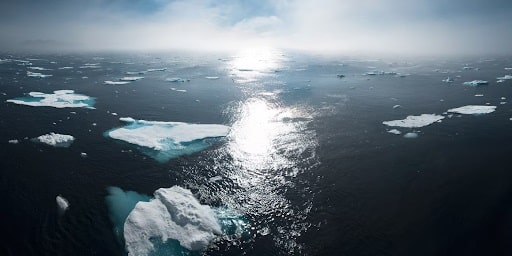Blog

The COP26 Summit saw more than 40 world leaders promising to phase out coal by 2050 and another 100 committing to end deforestation by 2030. A frequent theme in discussions of the urgency of these measures was global and national security.
According to NATO Secretary General Jens Stoltenberg, climate change has become one of NATO’s main concerns because of the inherent dangers it brings. “Climate change matters for NATO because it matters for our security, and NATO is now addressing these challenges.”
Mariam Al Mheiri, the UAE’s Minister of Climate Change and Environment, said that decisions at COP26 “must be informed by the fact that many countries are experiencing climate change as a form of violence.”
How Climate Change Impacts Security
Over the past 50 years, climate change has caused a surge in natural disasters and extreme weather events.According to the UN, these events disproportionately impact poor countries. Whereas richer countries are able to implement warning systems and disaster management plans, poorer countries lack such resources. Therefore, they are hit with higher casualty rates and economic losses, which they can scarcely afford.
These losses create a cycle of poverty that already-impoverished nations struggle to break out of. As countries focus on rebuilding, they leave themselves open to security risks, both internal and external. Climate change is also a major driver of mass migration, which can place a strain on host countries.
The OSRSG Children and Armed Conflict notes that in the Horn of Africa, extreme weather events like droughts and floods exacerbate the already-existing problems of food insecurity and displacement. When these problems worsen, they lead to increasing conflict over resources.
Special Representative of the Secretary-General for Children and Armed Conflict, Virginia Gamba, spoke at COP26 Summit and said:
“Whether by increasing the scarcity of resources and sharpening competition for them, accelerating desertification, impacting crops, or forcing the displacement of population, climate change exacerbates the risks of instability and conflict. Decisive action on climate change and ending and preventing grave violations against children go hand in hand with preventing the emergence of conflict in the first place.”
Africa is not the only region at risk. A report from the Council on Strategic Risks found that climate change may increase conflict between India and China by intensifying competition over water resources. And according to a recent study published by Nature, the risk of violent armed conflict in general will increase as climate change progressively worsens.
How Militaries Are Preparing to Deal with Climate Change
With the perspective that climate change is a security threat, militaries are preparing for several realities:
● What will happen if climate negotiations fail?
● What will happen if negotiations succeed and militaries need to reconsider their entire infrastructure?
If security negotiations fail, countries will fall back on their militaries to protect themselves from external and internal threats (especially if food and water become scarce). Militaries are also likely to be called upon to help when extreme weather events occur.
If a deal can be reached and honored by most countries in the world, militaries will then face the challenge of going green. According to a 2019 study by Lancaster University, the US military consumes more liquid fuels and emits more CO2e (carbon-dioxide equivalent) than most countries. Going green will cost billions and require a significant transition period.
Ben Wallace, the UK’s Defense Secretary, acknowledged his own country’s challenges in going green. He said the government is in favor of reducing greenhouse gas emissions, but cannot replace its current technology until new technology is available. That would leave them defenseless.
Climate Commitments Can Make a Difference
As military and world leaders have indicated, cutting down on greenhouse gas emissions and phasing out the use of coal will not be easy. It is an effort that will require meticulous organization, forward planning, and a lot of money. And it must be done in a way that does not leave countries defenseless as they transition to greener sources of energy.
But the alternative is much worse. More frequent and severe extreme weather events, food scarcity, displacement, and war are the very possible outcomes of ignoring the planet’s increasing temperatures. We have already seen many of these on a relatively small scale, and the results have been devastating. If world leaders do not take the necessary actions now, the future will indeed look bleak.
At COP26 Summit, leaders had the opportunity to commit to a better future for the next generations and our planet. Hopefully, they will act on their commitments and change the course of Earth’s current trajectory.

